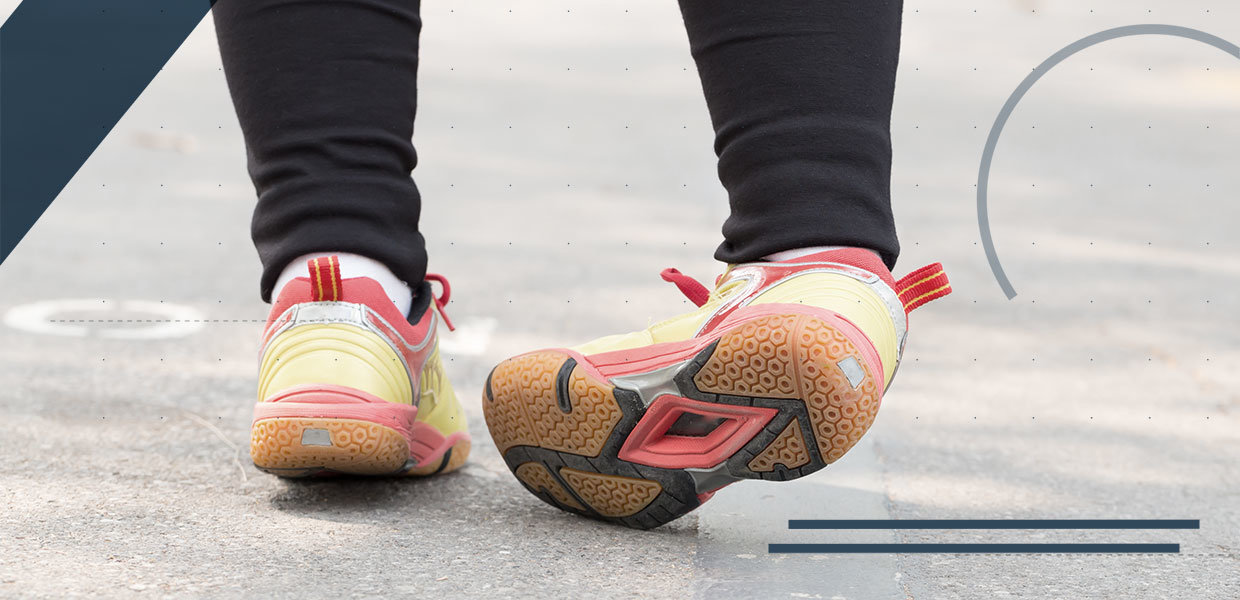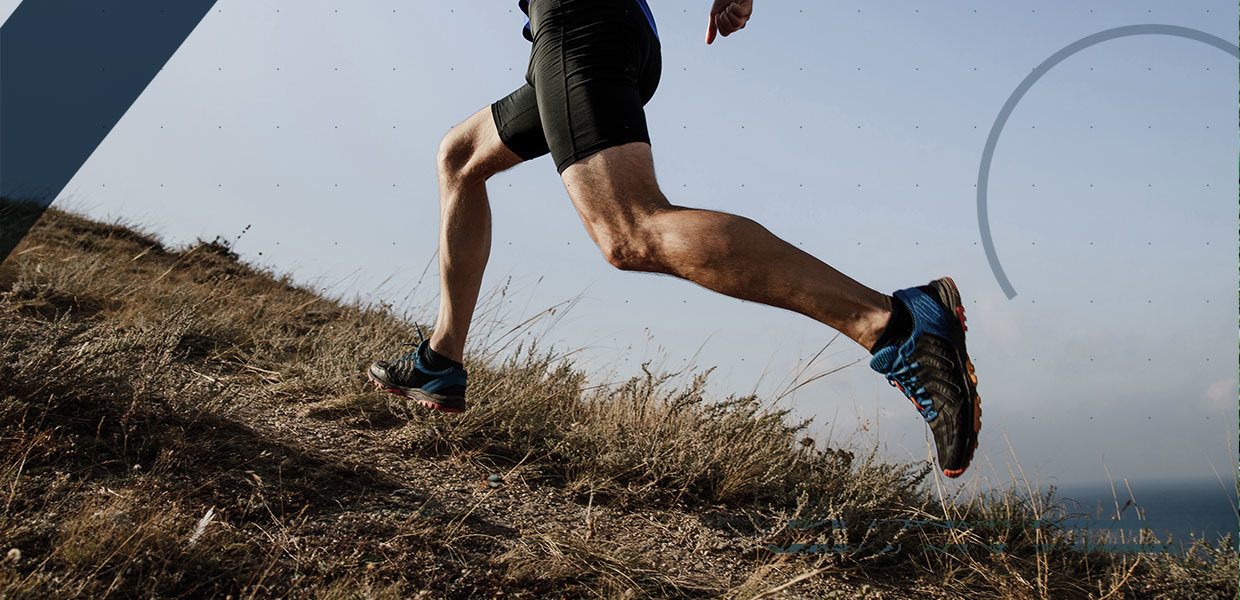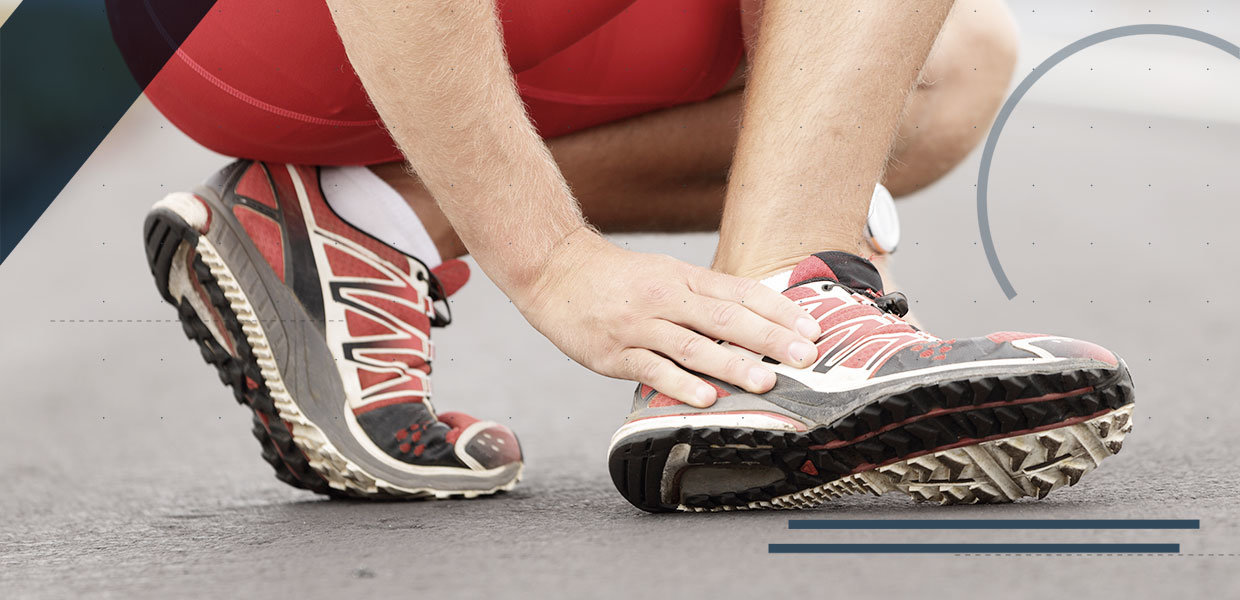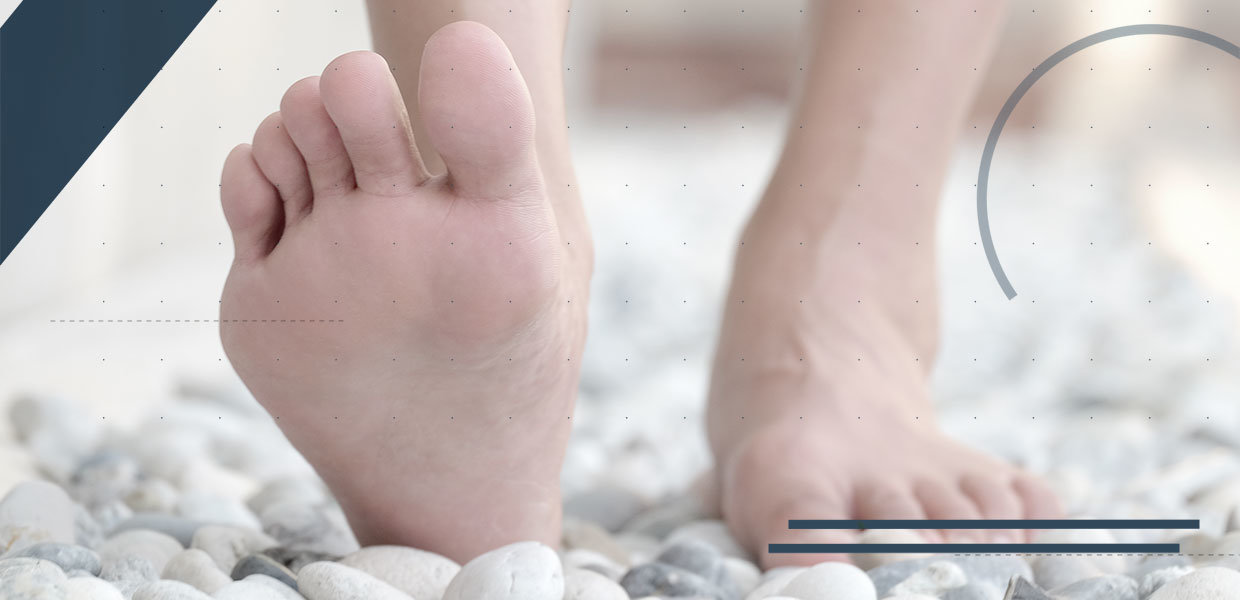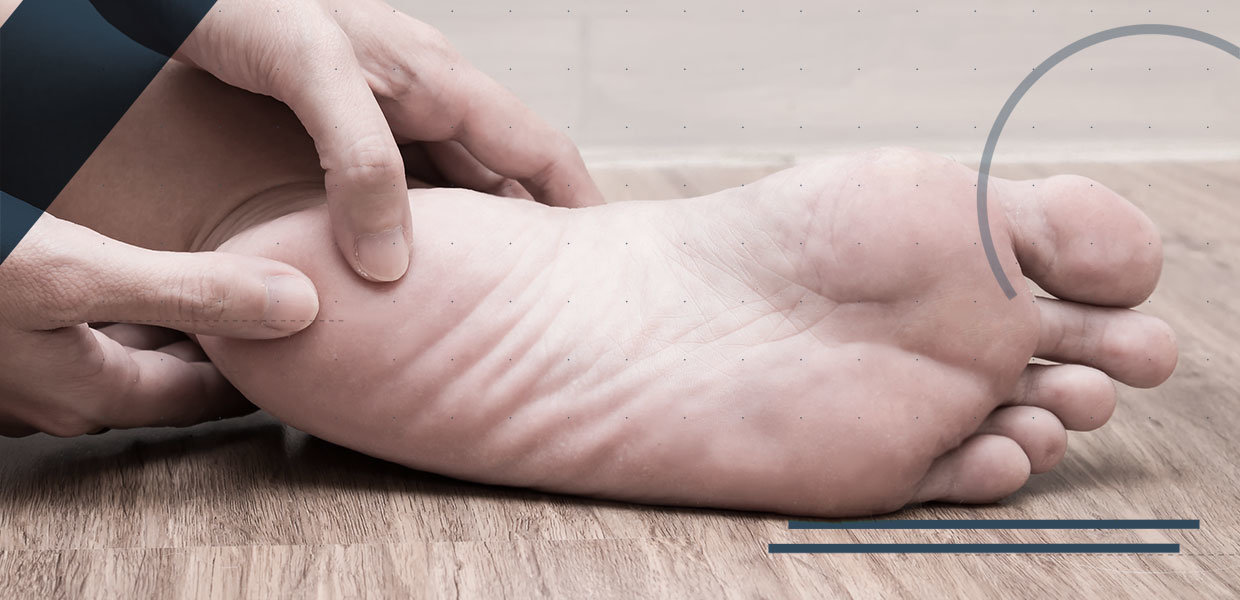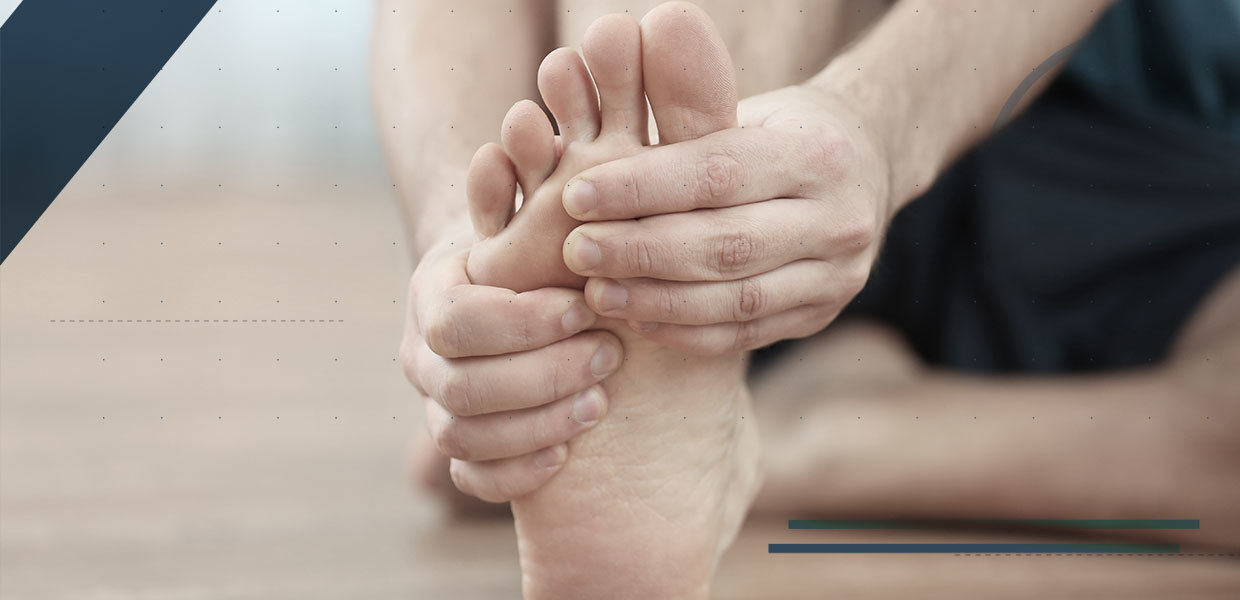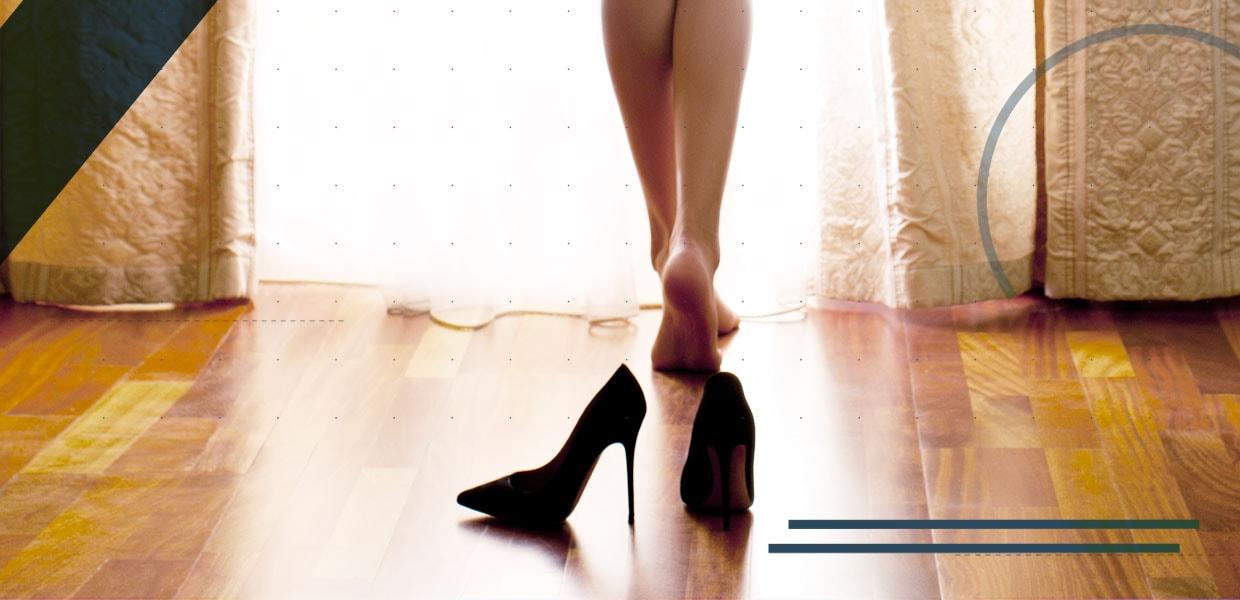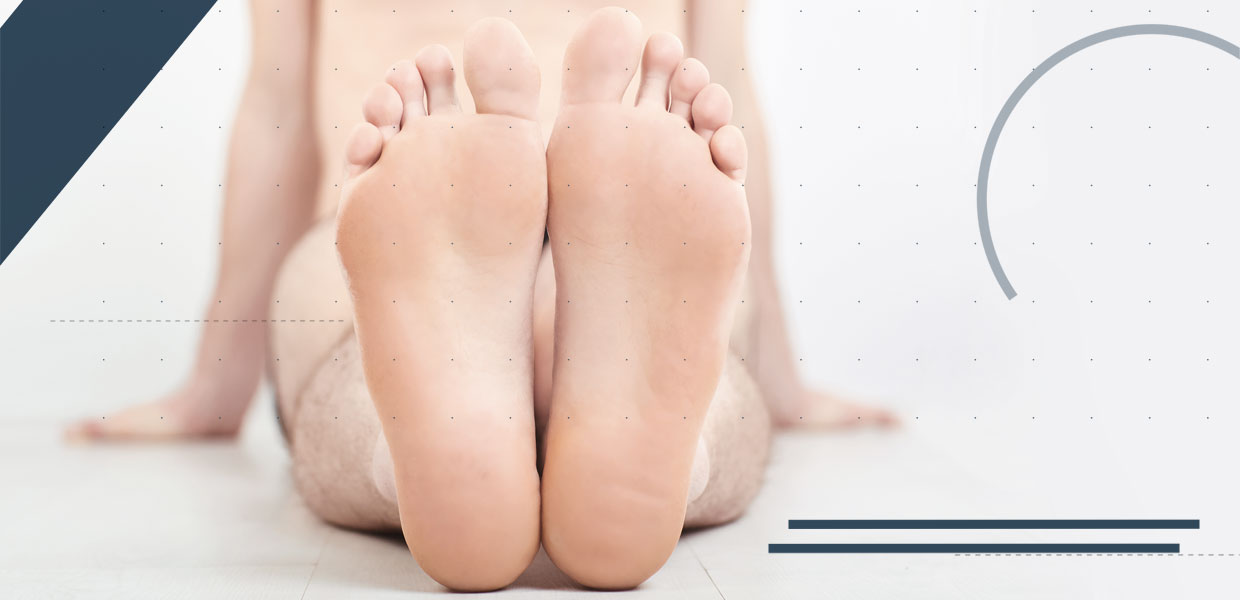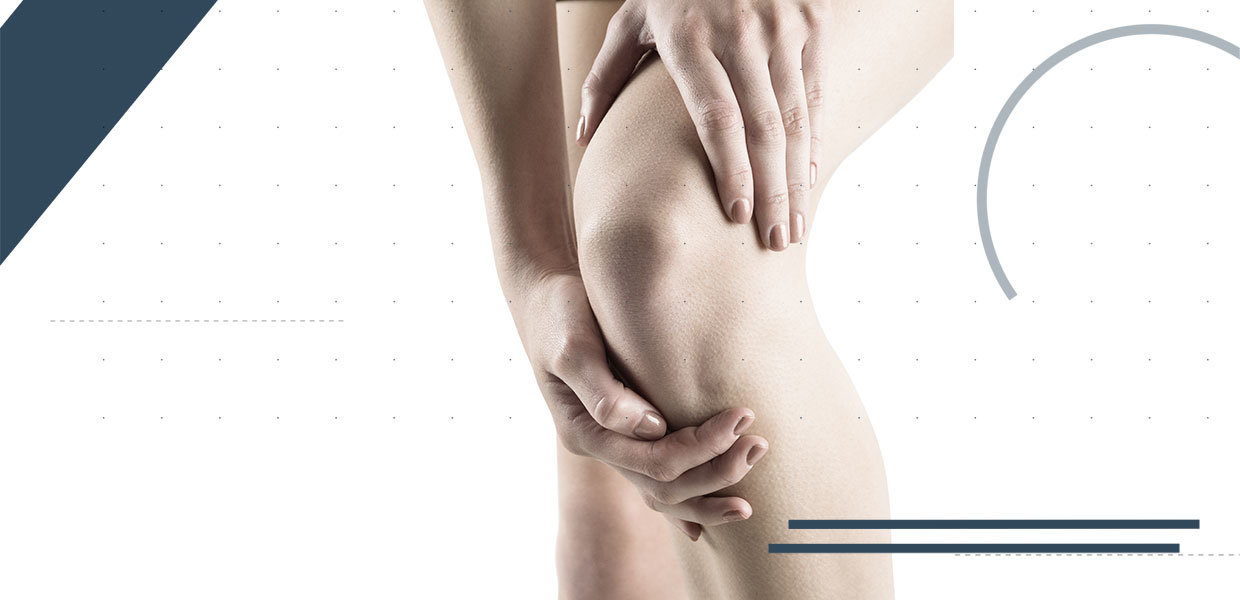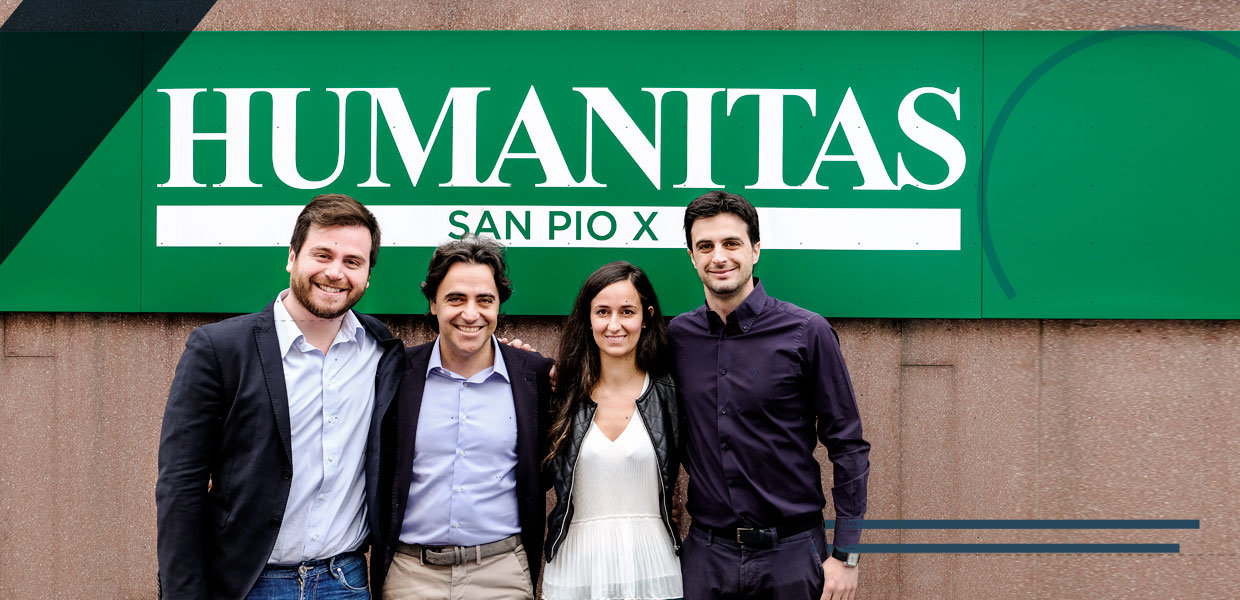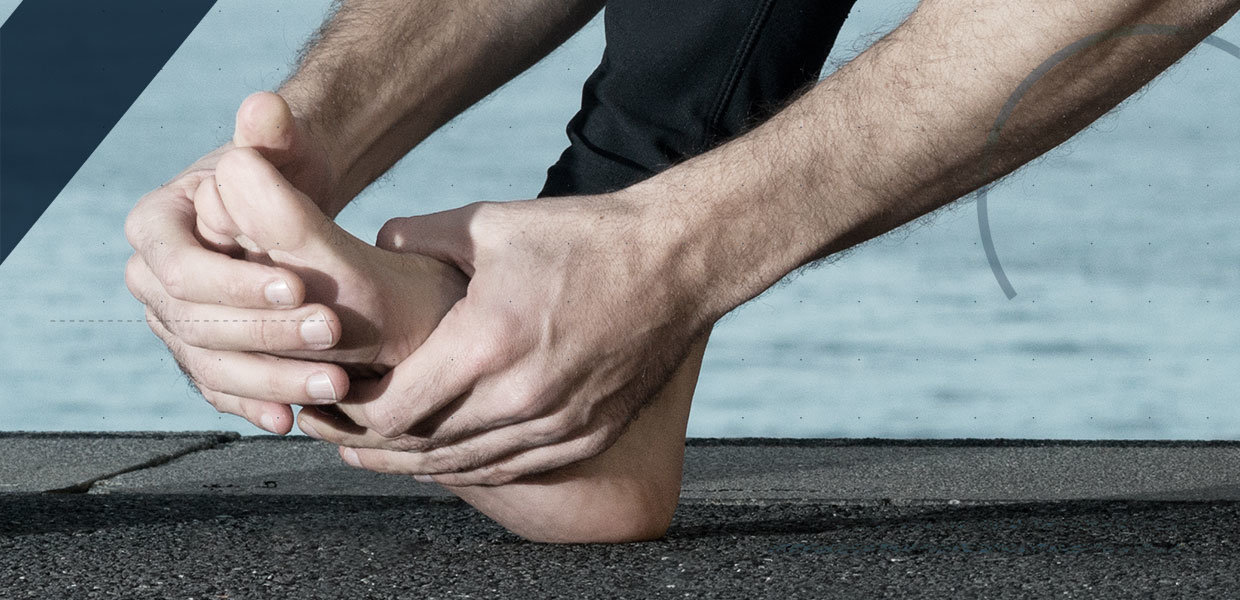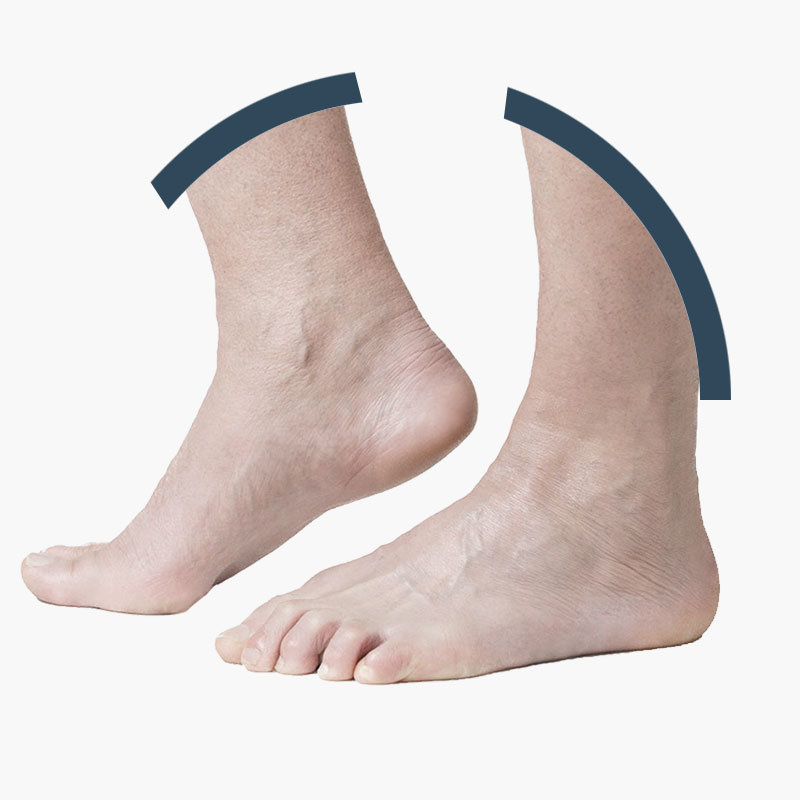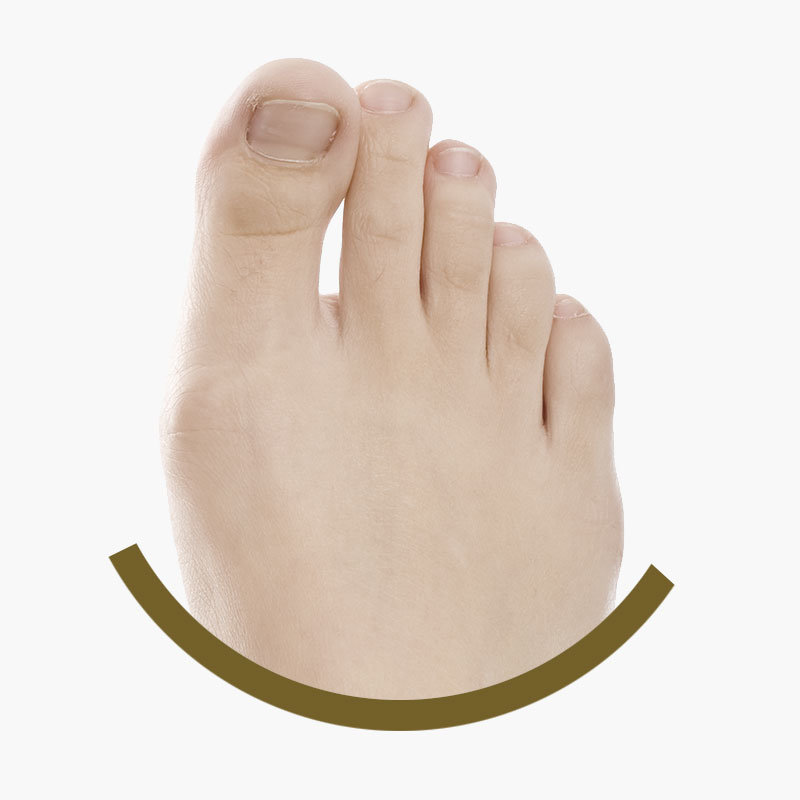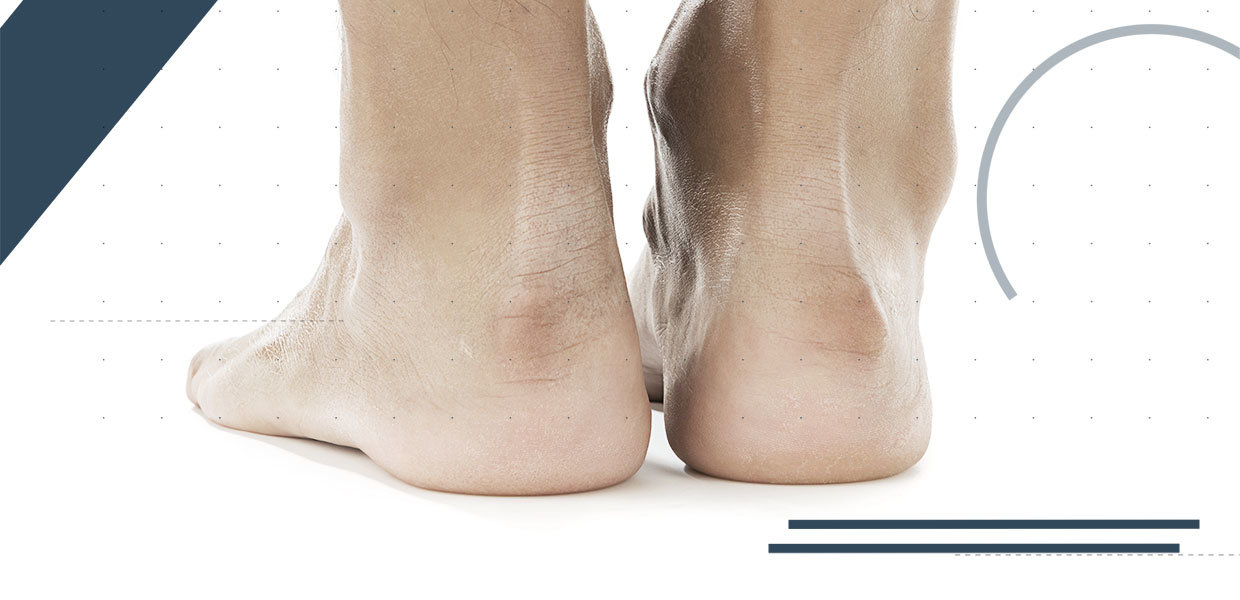Early Outcomes of a Novel Transfibular Total Ankle Replacement System

Authors: Camilla Maccario, Eric W. Tan, Paul G. Talusan, Lew C. Schon
Level of evidence: level IV, retrospective case series
Keywords: ankle arthritis, ankle replacement, arthroplasty, fixed bearing, lateral approach, fibula osteotomy, trabecular metal
Abstract
Introduction:
Ankle arthritis is a painful, disabling condition, resulting in dysfunction, impaired mobility, and worsening quality of life. With the evolution of prosthetic design and surgical techniques, total ankle arthroplasty (TAA) has become a reasonable, motion-preserving alternative to arthrodesis with comparable improvements in function and quality of life. Recently, a transfibular replacement system has been developed and approved for use.
Methods:
Twenty TAAs were performed in 19 patients and followed prospectively. Preoperative assessment included visual analogue scale (VAS) pain and function scores and range of motion (ROM). Postoperatively, patients were also evaluated with the Short-Form 36, Foot and Ankle Ability Measure (FAAM), Foot and Ankle Outcome Score (FAOS), and American Orthopaedic Foot and Ankle Society (AOFAS) score. Serial radiographs were performed at 3, 6, and 12 months after surgery. Complications and additional surgical procedures were identified.
Results:
There were 13 females and 7 males with an average age of 63.2 years (range 41-82 years) and average follow-up of 18 months (range 12-27 months). Postoperatively, 11/19 patients rated their pain control and function as “excellent,” 6/19 as “good,” 1/19 as “fair,” and 1/19 as “poor.” There were significant improvements in VAS pain scores (from 7.5±1.9 to 2.2±2.0; P<0.05) and function scores (from 3.2±2.1 to 7.0±1.9; P<0.05). The postoperative AOFAS score was 83.6 (range 31-100); FAAM score was 83.8 (range 35-100); FAOS subscores ranged from 52.7% to 86.7%. The average dorsiflexion and plantarflexion motion improved from 6.4±10.2 preoperatively to 12.5±8.5 degree (P=0.047) and from 25.0±15.4 preoperatively to 39.0±15.2 degrees (P=0.006), respectively. Radiographically, the ankle prosthesis allowed for significant improvements in coronal and sagittal alignment. Postoperatively, there was no evidence of implant failure. One patient had asymptomatic mild tibial lucency at 12 months after surgery. There were two postoperatively complications: one patient with anterior impingement and another with a deep infection. In addition, three patients underwent additional surgery to remove symptomatic fibular hardware.
Discussion and Conclusions:
This is the first study evaluating the short-term clinical and radiographic outcomes of the lateral approach total ankle replacement system. The short-term results appear encouraging. Longer-term follow-up is necessary to further understand the longevity and functional outcomes of this prosthesis.
Introduction
Despite advances in the understanding of the cartilage and biomechanics of the ankle joint, the treatment of ankle arthritis remains a difficult problem. In almost 80% of patients, end-stage ankle arthritis is the result of previous trauma (Saltzman et al., 2005; Valderrabano et al., 2009). Therefore, in most cases, patients are typically younger and more active (Glazebrook et al., 2008; Buckwalter et al., 2004).
Ankle arthrodesis has traditionally been the standard of care for the treatment of end-stage ankle arthritis (Abdo and Wasilewski, 1992; Lynch e al., 1988). Elimination of motion at the affected ankle joint is effective in reducing the pain and dysfunction (Slobogean et al., 2010(FAI); Singer et al., 2013(JBJS); Thomas et al., 2006 (JBJS)). However, ankle fusion is associated with gait disturbances as well as adjacent joint overload and degeneration that can result in the need for additional surgical intervention (Bell CJ, et al 2007; DeOrio JK, et al. 2008; Buechel FF, et al. 1988; Piriou P, et al. 2008).
Since its development in the 1970s, total ankle arthroplasty (TAA) has continued to evolve and improve. While early prostheses revealed satisfactory results in only 10-65% of patients (Mann et al., 2011(FAI); Vickerstaff JA, Med Eng Phys. 2007; Bolton-Maggs BG, J Bone Joint Surg Br. 1985, Pappas M, Buechel FF, Clin Orthop Relat Res. 1976; Newton SE. Clin Orthop Relat Res. 1979), recent advances in implant design and surgical techniques have led to pain and functional outcomes comparable to arthrodesis (Daniels et al., 2014; Zaidi et al., 2013; 11; 12). Most recently, survivorship rates have been reported between 70% to 85% at 10 years (17-19; Haddad et al., 2007(JBJS); Brunner et al., 2013(JBJS); Barg et al, 2013(JBJS); Mann et al., 2011(FAI); Henricson et al., 2011 (Acta Orthop); Labek et al., 2013 (Int Orthop); Labek et al., 2011(FAI)).
Recently, a novel total ankle implant was approved for use in the US. This fixed-bearing prosthesis uses a lateral transfibular surgical approach in addition to highly crosslinked polyethylene. We report the first study that reviews the short- to intermediate-term outcomes of this new prosthesis. We hypothesized that patients undergoing total ankle arthroplasty would have significant improvements in their pain and functional scores.
Materials and Methods
This study was approved by Institutional Review Board. From May 2013 to June 2014, 19 consecutive patients (20 ankles) underwent primary TAA using the Zimmer Trabecular Total Ankle (Zimmer, Warsaw, IN). Clinical and radiographic outcomes were collected for each patient prospectively. All surgical procedures were performed by the senior author. The indications for surgery included post-traumatic arthritis, idiopathic osteoarthritis, and rheumatoid arthritis.
Operative technique and Postoperative Management
A longitudinal incision was made along the posterior aspect of the fibula from the distal tip of the fibula to approximately 15 cm proximally. The anterior talofibular ligament (ATFL) was identified and sectioned, leaving enough tissue to repair at the end of the case; the calcaneofibular and posterior talofibular ligaments are left intact. Once the fibula was appropriately exposed, an oblique osteotomy of the fibula was performed approximately 2 cm proximal to the joint line. The distal fibular segment was reflected distally and secured to the calcaneus with a K-wire.
Exploration of the medial gutter was performed through a separate incision. Osteophytes were debrided and the anterior and posterior capsule of the ankle joint were released which allowed the ankle to be placed into a neutral position. A depth gauge was placed across the width of the talus to determine the maximum implant size possible without any lateral overhang.
The ankle was then aligned using the external fixator frame. The leg and foot were internally rotated 5-10 degrees to establish the central axis of the joint and the ankle malalignment was corrected to neutral in the coronal and sagittal planes. Fixation to the frame was performed placing a calcaneal transfixion pin from medial to lateral, a talar neck pin and 2 tibial pins (one approximately 5 cm proximal to the joint line and an additional one 20 cm proximal to the joint line).
Once the ankle had been locked into the frame and the alignment confirmed, the cutting guide was placed laterally at the level of the ankle joint. Next, the pre-cutting drill guide was attached for gross bone removal using the peck drilling technique. Then, final bone resection was performed using the cutting guide and a rotational burr. Fluoroscopy was used during the drilling and routing steps to minimize the risk of excessive medial malleolar bone removal.
After bone preparation was completed, the rail guide holes were drilled and a trial reduction was performed to finalize the polyethylene thickness. The final implants were placed according to the protocol. Then, the fibula was reduced and a fibular plate applied. Finally, the ATFL was repaired and the wound was closed in a layered fashion.
In cases of ligamentous instability and the presence of degeneration of adjacent joints, additional surgeries were considered either prior to or at the time of prosthetic implantation.
Postoperatively, patients were placed into a well-padded, short leg splint and made non-weight bearing. Dorsiflexion exercises in the splint were started immediately after surgery (for 20 minutes, 5 times per day) to preserve gastrocnemius tone. At 10-14 days after surgery, stitches were removed and the patient was placed into a removable cam boot. Patients were allowed to start performing deep knee bends for 20 minutes, 5 times per day, but continued to be non-weight bearing for an additional 4 weeks. Importantly, patients were instructed not to do any twisting while performing the weight bearing exercises. In patients with a concomitant corrective osteotomy or fusion, this was not started until 6 weeks after surgery. At 6 weeks postoperatively, full weight bearing and a foot and ankle rehabilitation program, which included range of motion, strengthening, and proprioceptive training, were initiated in all patients. The patient was weaned out of the boot as tolerated between 6-12 weeks.
Clinical and radiological evaluation
Patients were evaluated clinically preoperatively and at a minimum of 12 months postoperatively (range, 12-27 months). Pain and function was assessed using the Visual Analogue Scale (VAS), Short-Form 36 (SF-36) Health Survey – physical component score (PCS) and mental component score (MCS), American Orthopaedic Foot and Ankle Society (AOFAS) ankle and hindfoot score, Foot and Ankle Ability Measure (FAAM) activities of daily living subscale, and the Foot and Ankle Outcome Score (FAOS) (Madeley et al., 2012 (FAI); Jenkinson (1997); Guyton et al., 2001 (FAI); Mani et al., 2015; Weel et al., 2014). In addition, range of motion (ROM) was determined using a goniometer along the lateral border of the foot and ankle. Perioperative complications and need for additional surgery or intervention were noted.
Weight-bearing anteroposterior, mortise, and lateral views of the ankle were performed preoperatively and at 3, 6, and 12 months postoperatively. Angular measurements were made as described by Braito et al (2015). On the anteroposterior view, the anatomic lateral distal tibial angle (ALDTA; normal value 85 to 95 degrees) was measured as the angle between the long axis of the tibia and the articular surface of the tibial plafond (Figure 1A/C). In addition, the tibiotalar angle was measured as the angle between the long axis of the tibia and a perpendicular line to the superior articular surface of the talus (TTA; normal value: -5 to 5 degrees) (Figure 1B/D). On the lateral view, the anatomic anterior distal tibial angle (AADTA; normal value: 80 to 90 degrees) is defined as the slope of the tibia (Figure 2A/C). Furthermore, the anteroposterior offset ratio (APOR; normal value: 0) was measured to determine the sagittal translation of the talus relative to the long axis of the tibia as described by Berg et al (2011; JBJS)(Figure 2B/D).
Postoperatively, the talar component was assessed for subsidence, which was defined as a change in the vertical position of the prosthesis component by 5 mm or more (Datir et al. 2013). In addition, radiolucency around the tibial and talar components was examined on the AP and lateral radiographs (Figure 3AB). Significant bone loss, or lucency, was defined as greater than 2mm at any of the defined zones of the tibial and talar components. Importantly, dorsiflexion and plantarflexion lateral radiographs were performed to allow for accurate assessment of the tibial and talar components that may be obscured by the lateral fibular plate (Figure 3CD).
Statistical analysis
Data were analyzed using descriptive statistics, one-way ANOVA, and paired Student’s t-tests. Differences were considered significant at a p ≤ 0.05.
Results
The study cohort consisted of 20 patients with an average follow-up of 18 months (range, 12-27 months). There were 13 females and 7 males with an average age of 63.2 years (range, 41-82 years). Seven right and 13 left TAAs were performed. The average BMI was 26.5 kg/m2 (range, 17.0-35.2 kg/m2). Diagnoses included post-traumatic arthritis (12/20 ankles), idiopathic osteoarthritis (6/20 ankles), and rheumatoid arthritis (2/20 ankles). Two patients had a concurrent fibular lengthening at the time of surgery in order to balance ligamentous stability. Eight of the patients previously underwent surgical intervention prior to TAA including 3 ankle arthroscopies, 1 subtalar fusion, 3 triple arthrodesis, and 1 double arthrodesis. Six patients (30%) had one additional procedure performed at the time of TAA: gastrocnemius recession (10%), peroneal tendon reduction with groove deepening (5%), deltoid ligament repair (5%), plantarflexion medial cuneiform osteotomy (5%), and revision subtalar fusion (5%).
Clinically, the range of motion demonstrated statistically significantly increases postoperatively. The average dorsiflexion and plantarflexion motion improved from 6.4±10.2 preoperatively to 12.5±8.5 degree (P=0.047) and from 25.0±15.4 preoperatively to 39.0±15.2 degrees (P=0.006), respectively, at the most recent follow up. In addition, there were statistically significant improvements in VAS pain and function scores. The mean VAS pain score demonstrated statistically significant improvement from 7.5±1.9 points preoperatively to 2.2±2.0 points at the time of the latest follow-up (p < 0.001). In addition, the mean VAS function score demonstrated a statistically significant increase from 3.2±2.1 points preoperatively to 7.0±1.9 points at the time of the latest follow-up (P<0.001).
Functional scores were recorded at an average of 18 months (range, 12-27 months) after surgery (Table1). Using the SF-36, the mean physical component score was 41.9 (range, 30.4-55.2) and the mean mental component score was 52.6 (range, 18.3-68.2). In addition, the mean postoperative AOFAS ankle and hindfoot score was 83.2 (range 31-100) while the mean FAAM activities of daily living subscale was 83.8% (range, 35.0-100.0%). Furthermore, the FAOS demonstrated a mean activity score of 86.7% (range, 54.4-98.5%), mean pain score of 79.2% (range, 47.2-100.0%), mean sports score of 56.4% (range, 10-100%), mean symptoms score of 71.1% (range, 21.4-89.3%), and mean quality of life of 52.7% (range, 12.5-87.5%).
At most recent follow-up 11/19 patients rated their pain control and function as “excellent,” 6/19 as “good,” 1/19 as “fair,” and 1/19 as “poor.” The patient who reported his outcome as “poor” had a history of complex region pain syndrome as well as multiple surgeries performed at an outside institution prior to TAA. Almost all patients (94.9%) stated that they would undergo the same procedure again, whereas only one patient (5.1%) stated that they would not.
The mean and standard deviation of all radiologic parameters are shown in Table 2. In patients with normal coronal alignment (TTA between -5 and 5 degrees; n=8), the coronal alignment remained intact from 0.3±2.7 degrees preoperatively to 0.1±2.3 degrees at 12 months after surgery. Ankles with preoperative varus (n=8) demonstrated statistically significant improvement in alignment from -10.5±4.2 degrees to 0.9±2.3 degrees at 12 months after surgery (P<0.001); ankles with valgus deformity (n=4) significantly improved from 15.5±8.6 degrees to -2.0±4.1 degrees (P=0.001). Furthermore, the anteroposterior offset ratio (APOR) demonstrated improvement from 2.9±2.4 mm preoperatively to 1.9±1.6 mm at 12 months postoperatively (P=0.08).
One patient developed significant lucency around the tibial component at 12 months postoperatively. The patient was asymptomatic, but was found to have 2mm of radiolucency adjacent to the anterior rail guide of the tibial prosthesis (zone 1; Figure 4).
There were two postoperative complications. One patient developed symptoms of anterior impingement requiring partial excision of the anterior distal tibia and dorsal talar neck as well as a gastrocnemius recession. Another patient developed a deep wound infection 2 months postoperatively requiring an irrigation and debridement and polyethylene exchange in addition to intravenous antibiotics. Five months after surgery, the patient had an additional procedure for removal of a symptomatic fibular plate. Symptomatic fibular hardware was removed in two additional patients; there were no cases of fibular nonunion. There were no failures secondary to periprosthetic fractures, prosthetic dislocation or subluxation, polyethylene wear or migration, heterotopic bone formation, or reflex sympathetic dystrophy.
Discussion
This is the first study to evaluate the clinic and radiographic outcomes associated with the use of a novel total ankle arthroplasty system. The fixed-bearing prosthesis utilizes a transfibular surgical approach, trabecular metal bone-implant interface, and highly crosslinked polyethylene spacer.
Traditional TAA have been performed through the use of an anterior approach. However, the rate of wound complications has been reported from 2% to 40% (Myerson and Mroczek, 2003(FAI); Pyevick et al., 1998(JBJS)). The lateral transfibular surgical approach seeks to minimize the disruption of the blood supply to the skin, which may reduce the risk of wound healing issues. In addition, the transfibular access to the ankle joint provides direct visualization of the center of rotation, allowing for more accurate reconstruction of the joint alignment and kinematics as well as for less bone resection than other implants. The lateral access allows the implants to be placed perpendicular to the trabeculae of the tibia and talus; this may improve the transfer of forces from bone to implant and decrease the shear forces at the bone–implant interface.
In addition, the prosthesis integrates a tantalum trabecular metal bone-implant interface. The osteoconductive properties of the tantalum allow for bone apposition, ingrowth, and remodeling (Bobyn et al., 1999 (JBJS Br); Bobyn et al., 2004; Welldon et al., 2008). When utilized in total hip arthroplasty, D’Angelo et al. (2008) demonstrated increased bony integration of trabecular metal acetabular cups when compared to other porous coated cups. Furthermore, the curved nature of the implants increases the contact area to both reduce the risk of implant subsidence and minimizes the amount of bony resection.
Each of the other total ankle systems available for use features a convention, non-highly crosslinked polyethylene. The Zimmer TM total ankle is the first replacement system to incorporate highly crosslinked polyethylene. Bischoff et al. (2014) demonstrated significant wear rate reduction of 74% when the highly crosslinked polyethylene was compared to conventional polyethylene with in vitro wear testing. This reduction in wear may reduce the risk of implant loosening and subsequent need for revision surgery.
There are, however, potential issues associated with the design of this prosthesis. Despite the benefits of the lateral, transfibular approach, there are specific issues that must be considered. First, additional surgical procedures associated with a fibular nonunion or symptomatic hardware may be necessary. Second, revision of the total ankle implants can be challenging. Isolated polyethylene exchange may be performed through a lateral approach by reflecting the tissues anteriorly or via an anteromedial arthrotomy. However, if complete extraction of the implants is required, a fibular osteotomy would need to be performed.
There are several limitations in our study including a small sample size and short-term follow-up, which are mainly the result of the recent release of the specific total ankle system. In addition, the study did not include preoperative score measurements. However, the postoperative scores are similar to outcomes provided in the assessment of alternative total ankle systems. Importantly, it must be noted that the senior author is a co-inventor of the prosthesis. Therefore, the results may be biased secondary to great familiarity with the implants.
Conclusion
This is the first study evaluating the short-term clinical and radiographic outcomes of the Zimmer TM total ankle replacement system. The short-term clinical and radiographic outcomes are encouraging and comparable to results in alternative total ankle arthroplasty systems (Schweitzer et al., 2013 (JBJS); Kopp et al., 2006(FAI); Rippstein et al., 2011 (JBJS); Schenk et al., 2011 (FAI); Claridge and Sagherian, 2009(FAI)); Schonherr et al., 2008 (Orthopade)). Longer-term follow-up is necessary to determine the durability of this implant, sustainability of patient satisfaction, and effect on adjacent joint arthritis.
Figures:
Figure 1: Preoperative and postoperative anteroposterior radiographs. (A,C) The anatomic lateral distal tibial angle was measure as the angle between the long axis of the tibia and the articular surface of the tibial plafond. (B,D) The tibiotalar angle was measured as the angle between the long axis of the tibia and a perpendicular line to the superior articular surface of the talus.
Figure 2: Preoperative and postoperative lateral radiographs. (A,C) The anatomic anterior distal tibial angle is defined as the slope of the tibia. (B,D) The anteroposterior offset ratio (APOR; normal value: 0) was measured to determine the sagittal translation of the talus relative to the long axis of the tibia.
Figure 3: Radiolucency around the prosthesis. Zones of radiolucency around the tibial and talar components were examined on the AP (A, 2 zones around each component) and lateral radiographs (B, 3 zones around each component). Dorsiflexion (C) and plantarflexion (D) lateral radiographs were performed to allow for accurate assessment of the tibial and talar components that may be obscured by the lateral fibular plate
Figure 4: One patient developed asymptomatic significant lucency (2mm) adjacent to the anterior rail guide of the tibial component at 12 months postoperatively.
Table 1: Functional outcomes of total ankle arthroplasty at final follow-up
| MEAN | SD | RANGE | |
| SF-36 PCS | 41.9 | 10.1 | 30.4-55.2 |
| SF-36 MCS | 52.6 | 13.6 | 18.3-68.2 |
| FAAM ADL | 84 | 0.2 | 35.0-100.0% |
| FAOS Pain | 86.7 | 15.5 | 47.2-100.0% |
| FAOS Symptoms | 79.1 | 15.2 | 21.4-89.3% |
| FAOS ADL | 52.7 | 20 | 54.4-98.5% |
| FAOS Sports | 56.4 | 22.3 | 10-100% |
| FAOS QOL | 71.1 | 21.1 | 12.5-87.5% |
| AOFAS | 83.2 | 16.6 | 31-100 |
[SF-36: Short-Form 36, physical component score (PCS), mental component score (MCS); FAAM ADL: Foot and Ankle Ability Measure activities of daily living subscale; FAOS: Foot and Ankle Outcome Score subscales; AOFAS: American Orthopedic Foot and Ankle Society ankle and hindfoot score]
Table 2: Radiographic outcomes of total ankle arthroplasty preoperatively and at 3, 6, and 12 month follow-up
| PRE-OP | 3M | 6M | 1Y | |
| ALDTA (N=20) | 88.5 ± 4.5 | 88.5 ± 2.4 | 88.8 ± 2 | 88.6 ± 2.2 |
| TTA | ||||
|
NORMAL (N=8) |
0.3 ± 2.7 | 0.4 ± 3.1 | -0.1 ± 2.6 | 0.1 ± 2.3 |
|
VARUS (N=8) |
-10.5 ± 4.2 | 1.6 ± 2.3 | 1.0 ± 2.4 | 0.9 ± 2.3 |
|
VALGUS (N=4) |
15.5 ± 8.6 | -1.0 ± 4.2 | -1.8 ± 4.4 | -2.0 ± 4.1 |
| AADTA (N=20) | 85.4 ± 8.3 | 85.6 ± 5.7 | 85.9 ± 6.2 | 84.9 ± 4.9 |
| APOR (N=20) | 2.9 ± 2.4 | 1.7 ± 1.6 | 1.8 ± 1.6 | 1.9 ± 1.6 |
[ALDTA: anatomic lateral distal tibial angle; TTA: tibiotalar angle; AADTA: anatomic anterior distal tibial angle; APOR: anteroposterior offset ratio]
References:
Abdo RV, Wasilewski SA. Ankle arthrodesis: a long-term study. Foot Ankle. 1992 Jul-Aug;13(6):307-12.
Barg A, Elsner A, Anderson AE, Hintermann B: The effect of three-component total ankle replacement malalignment on clinical outcome: pain relief and functional outcome in 317 consecutive patients. J Bone Joint Surg Am 2011, 93(21):1969–1978.
Barg A, Zwicky L, Knupp M, Henninger HB, Hintermann B. HINTEGRA total ankle replacement: survivorship analysis in 684 patients. J Bone Joint Surg Am. 2013 Jul 3;95(13):1175-83. doi: 10.2106/JBJS.L.01234.
Bell CJ, Fisher J. Simulation of polyethylene wear in ankle joint prostheses. J Biomed Mat Res Part B: Appl Biomat. 2007;81B:162-167.
Bischoff JE, Fryman JC, Parcell J, Orozco Villaseñor DA.Influence of Crosslinking on the Wear Performance of Polyethylene Within Total Ankle Arthroplasty. Foot Ankle Int. 2014 Nov 4.
Bobyn JD, Hacking SA, Chan SP. Characterization of new porous tantalum biomaterial for reconstructive orthopaedics. AAOS An- nual Meeting. 1999.
Bobyn J, Poggie R, Krygier J, Lewallen D, Hanssen A, Lewis R, Unger AS, O’Keefe TJ, Christie MJ, Nasser S, Wood JE, Stulberg SD, Tanzer M. Clinical validation of a structural porous tantalum biomaterial for adult reconstruction. J Bone Joint Surg Am 86(suppl 2):123–129, 2004.
Bolton-Maggs BG, Sudlow RA, Freeman MA. Total ankle arthroplasty. A long-term review of the London Hospital experience. J Bone Joint Surg Br. 1985 Nov;67(5):785-90.
Braito M, Dammerer D, Reinthaler A, Kaufmann G, Huber D, Biedermann R. Effect of Coronal and Sagittal Alignment on Outcome After Mobile-Bearing Total Ankle Replacement. Foot Ankle Int. 2015 Apr 21.
Brunner S, Barg A, Knupp M, Zwicky L, Kapron AL, Valderrabano V, Hintermann B. The Scandinavian total ankle replacement: long-term, eleven to fifteen-year, survivorship analysis of the prosthesis in seventy-two consecutive patients. J Bone Joint Surg Am. 2013 Apr 17;95(8):711-8.
Buckwalter JA, Saltzman C, Brown T. The impact of osteoarthritis: implications for research. Clin Orthop Relat Res. 2004 Oct;(427 Suppl):S6-15. Review.
Buechel FF, Pappas MJ, Iorio LJ. New Jersey low contact stress total ankle replacement: biomechanical rationale and review of 23 cementless cases. Foot Ankle Int. 1988;8:279–90.
Claridge RJ, Sagherian BH. Intermediate term outcome of the agility total ankle arthroplasty. Foot Ankle Int. 2009 Sep;30(9):824-35.
D’Angelo F, Murena L, Campagnolo M, Zatti G, Cherubino P. Analysis of bone ingrowth on a tantalum cup. Indian J Orthop 42:275–278, 2008.
Daniels TR, Younger AS, Penner M, Wing K, Dryden PJ, Wong H, Glazebrook M.Intermediate-term results of total ankle replacement and ankle arthrodesis: a COFAS multicenter study. J Bone Joint Surg Am. 2014 Jan 15;96(2):135-42.
Datir A, Xing M, Kakarala A, Terk MR, Labib SA. Skeletal Radiol. Radiographic evaluation of INBONE total ankle arthroplasty: a retrospective analysis of 30 cases. 2013 Dec;42(12):1693-701. doi: 10.1007/s00256-013-1718-0. Epub 2013 Sep 12.
DeOrio JK, Easley ME. Total ankle arthroplasty. Instr Course Lect. 2008;57:383-413.
Glazebrook M, Daniels T, Younger A, Foote CJ, Penner M, Wing K, Lau J, Leighton R, Dunbar M. Comparison of health-related quality of life between patients with end-stage ankle and hip arthrosis. J Bone Joint Surg Am. 2008 Mar;90(3):499-505. doi: 10.2106/JBJS.F.01299.
Guyton GP. Theoretical limitations of the AOFAS scoring systems: an analysis using Monte Carlo modeling. Foot Ankle Int. 2001 Oct;22(10):779-87.
Haddad SL, Coetzee JC, Estok R, Fahrbach K, Banel D, Nalysnyk L. Intermediate and long-term outcomes of total ankle arthroplasty and ankle arthrodesis: a systematic review of the literature. J Bone Joint Surg Am. 2007;89:1899–905.
Henricson A, Nilsson JA, Carlsson A. 10-year survival of total ankle arthroplasties: a report on 780 cases from the Swedish Ankle Register. Acta Orthop. 2011;82(6):655-659.
Jenkinson C, Layte R, Jenkinson D, Lawrence K, Petersen S, Paice C, Stradling A shorter form health survey: can the SF-12 replicate results from the SF-36 in longitudinal studies? J. J Public Health Med. 1997 Jun;19(2):179-86.
Kopp FJ, Patel MM, Deland JT, O’Malley MJ. Total ankle arthroplasty with the Agility prosthesis: clinical and radiographic evaluation. Foot Ankle Int. 2006 Feb; 27(2):97-103.
Labek G, Klaus H, Schlichtherle R, Williams A, Agreiter M. Revision rates after total ankle arthroplasty in sample- based clinical studies and national registries. Foot Ankle Int. 2011;32(8):740-745.
Labek G, Todorov S, Iovanescu L, Stoica CI, Bohler N. Outcome after total ankle arthroplasty-results and find- ings from worldwide arthroplasty registers. Int Orthop. 2013;37(9):1677-1682.
Lynch AF, Bourne RB, Rorabeck CH. The long-term results of ankle arthrodesis. J Bone Joint Surg Br. 1988 Jan;70(1):113-6.
Madeley NJ, Wing KJ, Topliss C, Penner MJ, Glazebrook MA, Younger AS.
Responsiveness and validity of the SF-36, Ankle Osteoarthritis Scale, AOFAS Ankle Hindfoot Score, and Foot Function Index in end stage ankle arthritis. Foot Ankle Int. 2012 Jan;33(1):57-63.
Mani SB, Do H, Vulcano E, Hogan MV, Lyman S, Deland JT, Ellis SJ. Bone Evaluation of the foot and ankle outcome score in patients with osteoarthritis of the ankle. Joint J. 2015 May;97-B(5):662-7.
Mann JA, Mann RA, Horton E. STAR™ ankle: long-term results. Foot Ankle Int. 2011 May;32(5):S473-84. doi: 10.3113/FAI.2011.0473.
Myerson MS1, Mroczek K. Perioperative complications of total ankle arthroplasty. Foot Ankle Int. 2003 Jan;24(1):17-21.
Newton SE. An artificial ankle joint. Clin Orthop Relat Res. 1979 Jul-Aug;(142):141-5.
Pappas M, Buechel FF, DePalma AF. Cylindrical total ankle joint replacement: surgical and biomechanical rationale. Clin Orthop Relat Res. 1976 Jul-Aug;(118):82-92.
Piriou P, Culpan P, Mullins M, Cardon JN, Pozzi D, Judet T. Ankle replacement versus arthrodesis: a comparative gait analysis study. Foot Ankle Int. 2008;29:3–9.
Pyevich, MT; Saltzman, CL; Callaghan, JJ; Alvine, FG: Total ankle arthroplasty: a unique design. Two- to 12-year follow-up. J. Bone Joint Surg, 80A:1410-1420, 1998.
Rippstein PF, Huber M, Coetzee JC, Naal FD. Total ankle replacement with use of a new three-component implant. J Bone Joint Surg Am. 2011 Aug 3; 93(15):1426-35.
Saltzman CL, Salamon ML, Blanchard GM, et al. Epidemiology of ankle arthritis: report of a consecutive series of 639 patients from a tertiary orthopaedic center. Iowa Orthop J. 2005;25:44-46.
Schönherr R, Fuss S, Körbl M, Trepte CT, Parsch D. Short-term results after STAR total ankle replacement. Orthopade. 2008 Aug;37(8):783-7.
Schweitzer KM, Adams SB, Viens NA, Queen RM, Easley ME, Deorio JK, Nunley JA. Early prospective clinical results of a modern fixed-bearing total ankle arthroplasty. J Bone Joint Surg Am. 2013 Jun 5;95(11):1002-11. doi: 10.2106/JBJS.L.00555.
Singer S, Klejman S, Pinsker E, Houck J, Daniels T. Ankle arthroplasty and ankle arthrodesis: gait analysis compared with normal controls. J Bone Joint Surg Am. 2013 Dec 18;95(24):e191(1-10).
Slobogean GP, Younger A, Apostle KL, et al. Preference-based quality of life of end-stage ankle arthritis treated with arthroplasty or arthrodesis. Foot Ankle Int. 2010;31(7):563-566;
Thomas R, Daniels TR, and Parker K: Gait analysis and functional outcome following ankle arthrodesis for isolated ankle arthritis. J Bone Joint Surg Am 2006; 88: pp. 526-535
Valderrabano V, Horisberger M, Russell I, Dougall H, Hintermann B. Etiology of ankle osteoarthritis. Clin Orthop Relat Res. 2009 Jul;467(7):1800-6. doi: 10.1007/s11999-008-0543-6. Epub 2008 Oct 2.
Vickerstaff JA, Miles AW, Cunningham JL. A brief history of total ankle replacement and a review of the current status. Med Eng Phys. 2007 Dec;29(10):1056-64. Epub 2007 Feb 14.
Weel H, Zwiers R, Azim D, Sierevelt IN, Haverkamp D, van Dijk CN, Kerkhoffs GM. Validity and reliability of a Dutch version of the Foot and Ankle Ability Measure. Knee Surg Sports Traumatol Arthrosc. 2014 Dec 25.
Welldon K, Atkins G, Howie D, Findlay D. Primary human osteoblasts grow into porous tantalum and maintain an osteoblastic phenotype. J Biomed Mater Res A 84:691–701, 2008.
Zaidi R, Cro S, Gurusamy K, Siva N, Macgregor A, Henricson A, Goldberg A. The outcome of total ankle replacement: a systematic review and meta-analysis. Bone Joint J. 2013 Nov;95-B(11):1500-7. doi: 10.1302/0301-620X.95B11.31633. Review.
